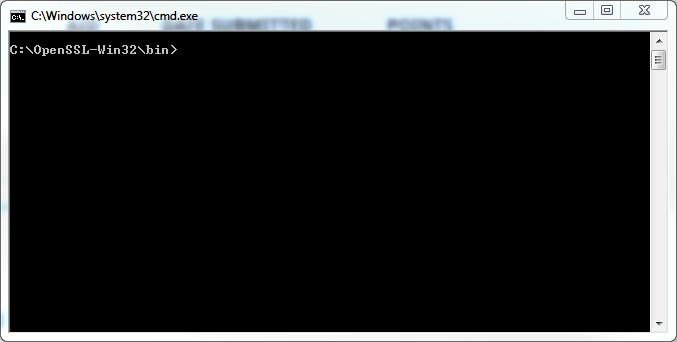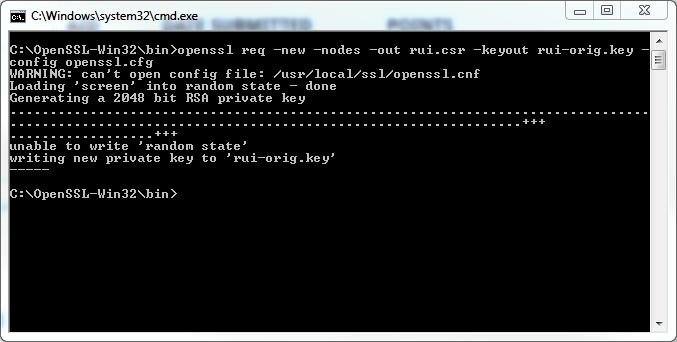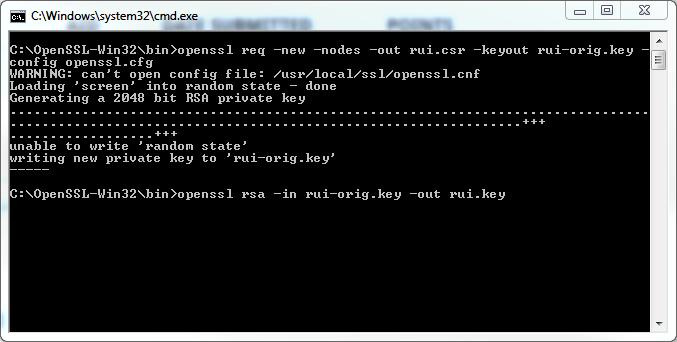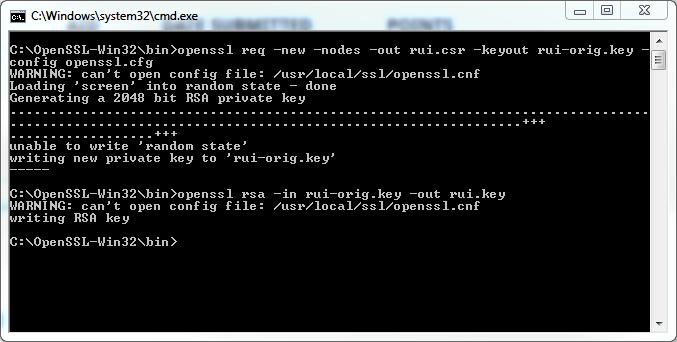HOW TO: Configure and Replace the SSL Certificate on a VMware vSphere Hypervisor 5.1 (ESXi 5.1) Host Server
EE Fellow, MVE, Expert of the Year 2021,2017-11, Scribe 2016-2012, Author of the Year 2018-6,2013-2012 VMware vExpert Pro, vExpert 2022-2011
Published:
Browse All Articles > HOW TO: Configure and Replace the SSL Certificate on a VMware vSphere Hypervisor 5.1 (ESXi 5.1) Host Server
In my previous VMware Articles, most featured Intermediate VMware Topics. My next series of articles will concentrate on topics for the VMware Novice; this is the twelfth article in this series.
If you would like to read the other articles in this series, they are listed here for your convenience.
During this series of articles VMware released VMware vSphere 5.5 and VMware vSphere Hypervisor ESXi 5.5. These articles are also applicable to VMware vSphere Hypervisor ESXi 5.x and 5.5. For consistency, I have used VMware vSphere Hypervisor ESXi 5.1 throughout this series.
Part 1: HOW TO: Install and Configure VMware vSphere Hypervisor 5.1 (ESXi 5.1)
Part 2: HOW TO: Connect to the VMware vSphere Hypervisor 5.1 (ESXi 5.1) using the vSphere Client
Part 3: HOW TO: Create an ISO CD-ROM/DVD-ROM image (*.iso), and MD5 checksum signature, for use with VMware vSphere Hypervisor 5.1 (ESXi 5.1)
Part 4: HOW TO: Upload an ISO CD-ROM/DVD-ROM image to a VMware datastore for use with VMware vSphere Hypervisor 5.1 (ESXi 5.1) using the vSphere Client, and checking its MD5 checksum signature is correct.
Part 5: HOW TO: Enable SSH Remote Access on a VMware vSphere Hypervisor 5.1 (ESXi 5.1)
Part 6: HOW TO: Create your first Linux Virtual Machine on a VMware vSphere Hypervisor 5.1 (ESXi 5.1) Host Server
Part 7: HOW TO: Create your first Windows Virtual Machine on a VMware vSphere Hypervisor 5.1 (ESXi 5.1) Host Server
Part 8: HOW TO: Install VMware Tools for Windows on a VMware Windows virtual machine on a VMware vSphere Hypervisor 5.1 (ESXi 5.1) Host Server
Part 9: HOW TO: Install VMware Tools for Linux on a VMware Linux virtual machine on a VMware vSphere Hypervisor 5.1 (ESXi 5.1) Host Server
Part 10: HOW TO: Backup (Export) and Restore (Import) virtual machines to VMware vSphere Hypervisor 5.1 for FREE
Part 11: HOW TO: Suppress Configuration Issues System logs on host are stored on non-persistent storage
In this series of basic VMware articles for the Novice, I'll be showing you the basic VMware skills required to install, configure and deploy virtual machines using VMware's FREE VMware vSphere Hypervisor (ESXi).
If you have been following my Experts Exchange articles, you may have noticed in this article Part 2: HOW TO: Connect to the VMware vSphere Hypervisor 5.1 (ESXi 5.1) using the vSphere Client, when we issued a connection to the VMware vSphere Hypervisor 5.1 (ESXi 5.1) server via Internet Explorer web browser
![Connecting to vSphere Hypervisor via Internet Explorer]() or the VMware vSphere Client
or the VMware vSphere Client
![Security Warning, when connecting via vSphere Client]() a security warning is displayed.
a security warning is displayed.
A Security Warning will appear, stating an untrusted SSL certificate is installed on your server. This is normal, because it's a VMware "self-signed" certificate.
In this tutorial article, I will outline a procedure, on HOW TO: Configure and Replace the SSL Certificate on a VMware vSphere Hypervisor 5.1 (ESXi 5.1) Host Server.
Software Prerequisites
Replace the contents of the file with this template
Please Note: Replace the code below in red text with the details of the server that you are configuring.
Save the file.
Open a command prompt and Change directory to C:\OpenSSL-Win32\bin
![commant prompt]() and type
and type
![openssl req -new -nodes -out rui.csr -keyout rui-orig.key -config openssl.cfg]() when it states writing new private key... the certificate request has been created and stored in the file rui.csr
when it states writing new private key... the certificate request has been created and stored in the file rui.csr
![rui.csr has been created]() The Certificate Key request needs to be in RSA format. To convert the key to RSA format type the following command:
The Certificate Key request needs to be in RSA format. To convert the key to RSA format type the following command:
![openssl rsa -in rui-orig.key -out rui.key]() after it states writing RSA key, the certification request has been completed.
after it states writing RSA key, the certification request has been completed.
![RSA key generated successfully]() If you open the rui.csr certificate with WinVi32, you should see a file similar to the following:- (do not alter or edit your file, these certificates listed below are examples and will not provide you with a certificate!)
If you open the rui.csr certificate with WinVi32, you should see a file similar to the following:- (do not alter or edit your file, these certificates listed below are examples and will not provide you with a certificate!)
It is important you keep the rui.csr, rui.key. The rui.key is your private key, and you must protect this carefully, and ensure you have a backup. (do not send this to anyone). The rui.csr is a certificate request, to request a SSL certificate.
Send the certificate request file (rui.csr) to a Certificate Authority (CA). I can recommend the following for inexpensive trusted SSL Certificate Authorities.
http://www.exchange-certificates.com
http://www.exchangecertificates.com
The Certificate Authority (CA) will send you back the generated certificate.
Rename the certificate rui.crt. If you open the rui.crt certificate with WinVi32, you should see a file similar to the following:- (do not alter or edit your file, these certificates listed below are examples and will not provide you with a certificate!)
Using WinSCP, login to the VMware vSphere Hypervisor 5.1 host server, and make copies of the existing rui.crt and rui.key, these can be found in /etc/vmware/ssl.
Using WinSCP copy your new rui.crt and rui.key from your Windows PC to the VMware vSphere Hypervisor 5.1 host server, /etc/vmware/ssl
If you need to enable SSH, please see my previous Experts Exchange article Part 5: HOW TO: Enable SSH Remote Access on a VMware vSphere Hypervisor 5.1 (ESXi 5.1)
![rui.crt and rui.key copy to ESXi host]()
Shutdown and restart your VMware vSphere Hypervisor 5.1 (ESXi 5.1) host server. Once the server has been restarted, it will use the new SSL certificate. When connecting from Internet Explorer or the VMware vSphere Client using the correct fully qualified domain name (FQDN), there will no longer be a SSL certificate security warning issued.
![Connecting to vSphere Hypervisor with SSL certificate]() Congratulations, you have successfully Configured and Replaced the SSL Certificate on a VMware vSphere Hypervisor 5.1 (ESXi 5.1) Host Server
Congratulations, you have successfully Configured and Replaced the SSL Certificate on a VMware vSphere Hypervisor 5.1 (ESXi 5.1) Host Server
****************************************************************************
Thank you for reading my article, please leave valuable feedback. If you liked my VMware article and would like to see more Articles from me, please click the Yes button near the: Was this article helpful? at the bottom of this article just below and to the right of this information. Thank You. Do not forget if you have a question about this article or another VMware, Virtualisation, Windows Server 2012 question, why not post a Question for me and the other Experts Exchange Experts in the VMware, Virtualisation, Windows 2008, Windows 2012 Zones. I look forward to hearing from you. - Andy :- twitter @einsteinagogo
****************************************************************************
If you would like to read the other articles in this series, they are listed here for your convenience.
During this series of articles VMware released VMware vSphere 5.5 and VMware vSphere Hypervisor ESXi 5.5. These articles are also applicable to VMware vSphere Hypervisor ESXi 5.x and 5.5. For consistency, I have used VMware vSphere Hypervisor ESXi 5.1 throughout this series.
Part 1: HOW TO: Install and Configure VMware vSphere Hypervisor 5.1 (ESXi 5.1)
Part 2: HOW TO: Connect to the VMware vSphere Hypervisor 5.1 (ESXi 5.1) using the vSphere Client
Part 3: HOW TO: Create an ISO CD-ROM/DVD-ROM image (*.iso), and MD5 checksum signature, for use with VMware vSphere Hypervisor 5.1 (ESXi 5.1)
Part 4: HOW TO: Upload an ISO CD-ROM/DVD-ROM image to a VMware datastore for use with VMware vSphere Hypervisor 5.1 (ESXi 5.1) using the vSphere Client, and checking its MD5 checksum signature is correct.
Part 5: HOW TO: Enable SSH Remote Access on a VMware vSphere Hypervisor 5.1 (ESXi 5.1)
Part 6: HOW TO: Create your first Linux Virtual Machine on a VMware vSphere Hypervisor 5.1 (ESXi 5.1) Host Server
Part 7: HOW TO: Create your first Windows Virtual Machine on a VMware vSphere Hypervisor 5.1 (ESXi 5.1) Host Server
Part 8: HOW TO: Install VMware Tools for Windows on a VMware Windows virtual machine on a VMware vSphere Hypervisor 5.1 (ESXi 5.1) Host Server
Part 9: HOW TO: Install VMware Tools for Linux on a VMware Linux virtual machine on a VMware vSphere Hypervisor 5.1 (ESXi 5.1) Host Server
Part 10: HOW TO: Backup (Export) and Restore (Import) virtual machines to VMware vSphere Hypervisor 5.1 for FREE
Part 11: HOW TO: Suppress Configuration Issues System logs on host are stored on non-persistent storage
In this series of basic VMware articles for the Novice, I'll be showing you the basic VMware skills required to install, configure and deploy virtual machines using VMware's FREE VMware vSphere Hypervisor (ESXi).
If you have been following my Experts Exchange articles, you may have noticed in this article Part 2: HOW TO: Connect to the VMware vSphere Hypervisor 5.1 (ESXi 5.1) using the vSphere Client, when we issued a connection to the VMware vSphere Hypervisor 5.1 (ESXi 5.1) server via Internet Explorer web browser
 or the VMware vSphere Client
or the VMware vSphere Client
 a security warning is displayed.
a security warning is displayed.
A Security Warning will appear, stating an untrusted SSL certificate is installed on your server. This is normal, because it's a VMware "self-signed" certificate.
In this tutorial article, I will outline a procedure, on HOW TO: Configure and Replace the SSL Certificate on a VMware vSphere Hypervisor 5.1 (ESXi 5.1) Host Server.
Software Prerequisites
WinVi32 - a version of vi for Windows downloads here - http://www.winvi.de/en/download.html
WinSCP is an open source free SFTP client and FTP client for Windows. The download is here - http://winscp.net/eng/index.php
OpenSSL version 0.98r or later from here - http://slproweb.com/products/Win32OpenSSL.html The Light version is all that is required.
Microsoft Visual C++ 2008 Redistributables here - http://www.microsoft.com/downloads/details.aspx?familyid=9B2DA534-3E03-4391-8A4D-074B9F2BC1BF ] If you have issues with installing OpenSSL, you will need the Microsoft Visual C++ 2008 Redistributables.
The above software products must be installed, it's beyond the scope of this document to show how to install the software prerequisites.
1. Creating the SSL certificate request
Firstly we need to erase the contents of the file openssl.cfg, by default this file can be found in the folder C:\OpenSSL-Win32\bin. I would recommend making a backup of this file, in case it's required later. Open the file with WinVi32.Replace the contents of the file with this template
[ req ]
default_bits = 2048
default_keyfile = rui.key
distinguished_name = req_distinguished_name
encrypt_key = no
prompt = no
string_mask = nombstr
req_extensions = v3_req
[ v3_req ]
basicConstraints = CA:FALSE
keyUsage = digitalSignature, keyEncipherment, dataEncipherment
extendedKeyUsage = serverAuth, clientAuth
subjectAltName = DNS:esx001, IP:192.168.10.128, DNS:esx001.cyrus-consultants.co.uk
[ req_distinguished_name ]
countryName = GB
stateOrProvinceName = North Yorkshire
localityName = YORK
0.organizationName = Cyrus Computer Consultants Ltd
organizationalUnitName = EE Article Department
commonName = esx001.cyrus-consultants.co.ukPlease Note: Replace the code below in red text with the details of the server that you are configuring.
Save the file.
Open a command prompt and Change directory to C:\OpenSSL-Win32\bin
 and type
and type
openssl req -new -nodes -out rui.csr -keyout rui-orig.key -config openssl.cfg when it states writing new private key... the certificate request has been created and stored in the file rui.csr
when it states writing new private key... the certificate request has been created and stored in the file rui.csr
 The Certificate Key request needs to be in RSA format. To convert the key to RSA format type the following command:
The Certificate Key request needs to be in RSA format. To convert the key to RSA format type the following command:
openssl rsa -in rui-orig.key -out rui.key after it states writing RSA key, the certification request has been completed.
after it states writing RSA key, the certification request has been completed.
 If you open the rui.csr certificate with WinVi32, you should see a file similar to the following:- (do not alter or edit your file, these certificates listed below are examples and will not provide you with a certificate!)
If you open the rui.csr certificate with WinVi32, you should see a file similar to the following:- (do not alter or edit your file, these certificates listed below are examples and will not provide you with a certificate!)
-----BEGIN CERTIFICATE REQUEST-----
MIIDfTCCAmUCAQAwgbUxCzAJBgNVBAYTAkdCMSEwHwYDVQQIExhFYXN0IFJpZGlu
Br7JbQIDAQABoIGBMH8GCSqGSIb3DQEJDjFyMHAwCQYDVR0TBAIwADALBgNVHQ8E
BAMCBLAwHQYDVR0lBBYwFAYIKwYBBQUHAwEGCCsGAQUFBwMCMDcGA1UdEQQwMC6C
BmVzeDAwMYcEwKgKgIIeZXN4MDAxLmN5cnVzLWNvbnN1bHRhbnRzLmNvLnVrMA0G
RGVwYXJ0bWVudDEnMCUGA1UEAxMeZXN4MDAxLmN5cnVzLWNvbnN1bHRhbnRzLmNv
ZyBvZiBZb3Jrc2hpcmUxETAPBgNVBAcTCE1lbHRvbmJ5MScwJQYDVQQKEx5DeXJ1
cyBDb21wdXRlciBDb25zdWx0YW50cyBMdGQxHjAcBgNVBAsTFUVFIEFydGljbGUg
2N3ORv1IlinowpSNuTCj/+9hFN17ZZpxCL2Lwclki+9pHLjdQd6QMxbGa3n4kHyB
BdVLSMH82U2E1SkrUs9XXLJJ/tsx09mUCRT/mNr8Vbt1lWc0ioTkLvFENxXllbDc
LnVrMIIBIjANBgkqhkiG9w0BAQEFAAOCAQ8AMIIBCgKCAQEAxJ5FVe3nsQ4Vbua9
xT7DRGrPlDREpDqHPfZ2Ohr+PCQCkrUagPywy8vYrhpTSD5zQrZd9em/B1LR34IO
GbmInJ3rACUs0Jova/WuL2YK+Ocdm6st/UUIIgRlrYWxzMbhRbKfYXfzqURIr+9U
2XajfqLm3K88zKdOtQqMEcu9Cgm4PBfk5zccUo3U0BxdR0OBSpWyNhRHiynsTEOC
kvX7mRnvNhdWyp5rOC7V53t2MVz7p2/5P0We2dueFC6hQPwwgwHSIdoNHVwNXt7T
Jpp0CIK54CZL6n43IvGo8VePry/W4WP6FTZ2ZN+SZnJrics4WtUE1/WtYAaV+Yts
CSqGSIb3DQEBBQUAA4IBAQC2O7iNovLSxna3so4sXmvRErprNiBnpoYUf7Dx+H0W
Yzekwz2vUSn+UY4tAbTZ+tdYmjVhiMyG8uhtLd095rJK022WBtQw+xSmL9JaEnu9
14nMaFAouRo/MS3iwP9LrzdNNgH2sjKnh8S5Wxkj0b+xeFRqmArUm5t4hWLKHT10
q8xKfr8rqXmDVooeT8u3st9Q6nzzuNCPS8p9/KdjM3Pd
-----END CERTIFICATE REQUEST------It is important you keep the rui.csr, rui.key. The rui.key is your private key, and you must protect this carefully, and ensure you have a backup. (do not send this to anyone). The rui.csr is a certificate request, to request a SSL certificate.
2. Obtaining the SSL certificate
The certificate request file (rui.csr) must be given to a certificate authority (CA) for generation of the actual certificate for the VMware vSphere Hypervisor 5.1 (ESXi 5.1) host server. The CA will send you back a certificate for installing on your VMware vSphere Hypervisor 5.1 (ESXi 5.1) host server.Send the certificate request file (rui.csr) to a Certificate Authority (CA). I can recommend the following for inexpensive trusted SSL Certificate Authorities.
http://www.exchange-certif
http://www.exchangecertifi
The Certificate Authority (CA) will send you back the generated certificate.
Rename the certificate rui.crt. If you open the rui.crt certificate with WinVi32, you should see a file similar to the following:- (do not alter or edit your file, these certificates listed below are examples and will not provide you with a certificate!)
-----BEGIN CERTIFICATE-----
MIIGjTCCBXWgAwIBAgIDDXp4MA0GCSqGSIb3DQEBBQUAMIGMMQswCQYDVQQGEwJJ
TDEWMBQGA1UEChMNU3RhcnRDb20gTHRkLjErMCkGA1UECxMiU2VjdXJlIERpZ2l0
YWwgQ2VydGlmaWNhdGUgU2lnbmluZzE4MDYGA1UEAxMvU3RhcnRDb20gQ2xhc3Mg
by51azExMC8GCSqGSIb3DQEJARYiaG9zdG1hc3RlckBjeXJ1cy1jb25zdWx0YW50
cy5jby51azCCASIwDQYJKoZIhvcNAQEBBQADggEPADCCAQoCggEBAMiwpzHe3b5k
14gkoKyEBRCRqbVtB4/AcXKLP/3sqm0ItWtCidROiYRojj1FIRF4ec/wgK4djb5L
oed9KJ+bsgZOfRi+nLI5pfew0Fjyl9jEj02WLMl++vcu6gmD1AZCpNafFiWVHz+I
Ey56BZhgLtSr8n9/7Jes86lQW3ElVTPSFSAmh1LgyY+PSBxaiSe+volugdaX33fL
4grg8wZr3H66cK6jNi7Xznlk8Ph2nfVmF3/T3qzUyii9DELVObr9O1wz9u3oZg2U
D9J6NeSKnJLPztbCyxJjsynvY0psuHA6HXawOIJ8tEPwWg3McDdAvPRiqxR2lm1D
KY2QIJ5hjN0CAwEAAaOCAvwwggL4MAkGA1UdEwQCMAAwCwYDVR0PBAQDAgOoMBMG
A1UdJQQMMAoGCCsGAQUFBwMBMB0GA1UdDgQWBBSkPU6eBa0eiMgLsEzHMWNh2bQg
hzAfBgNVHSMEGDAWgBTrQjTQmLCrn/Qbawj3zGQu7w4sRTBCBgNVHREEOzA5gh5l
c3gwMDEuY3lydXMtY29uc3VsdGFudHMuY28udWuCF2N5cnVzLWNvbnN1bHRhbnRz
LmNvLnVrMIIBVgYDVR0gBIIBTTCCAUkwCAYGZ4EMAQIBMIIBOwYLKwYBBAGBtTcB
AgMwggEqMC4GCCsGAQUFBwIBFiJodHRwOi8vd3d3LnN0YXJ0c3NsLmNvbS9wb2xp
Y3kucGRmMIH3BggrBgEFBQcCAjCB6jAnFiBTdGFydENvbSBDZXJ0aWZpY2F0aW9u
IEF1dGhvcml0eTADAgEBGoG+VGhpcyBjZXJ0aWZpY2F0ZSB3YXMgaXNzdWVkIGFj
Y29yZGluZyB0byB0aGUgQ2xhc3MgMSBWYWxpZGF0aW9uIHJlcXVpcmVtZW50cyBv
ZiB0aGUgU3RhcnRDb20gQ0EgcG9saWN5LCByZWxpYW5jZSBvbmx5IGZvciB0aGUg
aW50ZW5kZWQgcHVycG9zZSBpbiBjb21wbGlhbmNlIG9mIHRoZSByZWx5aW5nIHBh
LZaEK10rPEzeDPfPgefx2gjAdS6rZYspM7Sz5emZolX5osORynQ4ljhhROjbSGrf
A1NwRJig85qVbfBQhFWV2C502Pnj+ukg2GQKpHP3E4HZ0v40Eq9U50VHNopva926
9gBrnNssCGgfntFTQgh5KYY7YNeymCkGcgcBjps2cjvHz60N8idWgDX4PepNAECJ
SrwYOZouUfuscfsDC/mHCM/fl+eO4VphrLkwRdTHl8vbOi/AvvDR7vvfPAhssnb+
nA==
-----END CERTIFICATE-----3. Configure and Replace the SSL Certificate on a VMware vSphere Hypervisor 5.1
Using WinSCP, login to the VMware vSphere Hypervisor 5.1 host server, and make copies of the existing rui.crt and rui.key, these can be found in /etc/vmware/ssl.
Using WinSCP copy your new rui.crt and rui.key from your Windows PC to the VMware vSphere Hypervisor 5.1 host server, /etc/vmware/ssl
If you need to enable SSH, please see my previous Experts Exchange article Part 5: HOW TO: Enable SSH Remote Access on a VMware vSphere Hypervisor 5.1 (ESXi 5.1)

Shutdown and restart your VMware vSphere Hypervisor 5.1 (ESXi 5.1) host server. Once the server has been restarted, it will use the new SSL certificate. When connecting from Internet Explorer or the VMware vSphere Client using the correct fully qualified domain name (FQDN), there will no longer be a SSL certificate security warning issued.
 Congratulations, you have successfully Configured and Replaced the SSL Certificate on a VMware vSphere Hypervisor 5.1 (ESXi 5.1) Host Server
Congratulations, you have successfully Configured and Replaced the SSL Certificate on a VMware vSphere Hypervisor 5.1 (ESXi 5.1) Host Server
**************************
Thank you for reading my article, please leave valuable feedback. If you liked my VMware article and would like to see more Articles from me, please click the Yes button near the: Was this article helpful? at the bottom of this article just below and to the right of this information. Thank You. Do not forget if you have a question about this article or another VMware, Virtualisation, Windows Server 2012 question, why not post a Question for me and the other Experts Exchange Experts in the VMware, Virtualisation, Windows 2008, Windows 2012 Zones. I look forward to hearing from you. - Andy :- twitter @einsteinagogo
**************************
Have a question about something in this article? You can receive help directly from the article author. Sign up for a free trial to get started.


Comments (7)
Author
Commented:Commented:
Commented:
great article as usual Andrew. And I want to say : still valuable after 8 years!
I make this comment long after because I just had a situation with ESX 6.7 SSL certificate from custom CA, and it helped me, along with blogs and all VMware KBs related to the subject.
Thanks!
Author
Commented:Thanks for your kinds words
to be honest with you I had forgotten I had written an article about this, there are so many > 100 articles and videos.
I'm slowly re-publishing all the articles for 7.0, and also videos, so maybe I'll bring this one up to date and current!
This will be the next article for 7.0!
Andy
Commented:
Here are the 3 KBs I used yesterday on 6.7 :
https://kb.vmware.com/s/article/2113926
https://kb.vmware.com/s/article/2015387
https://kb.vmware.com/s/article/2112014
IMHO each KB was really incomplete without the others...
In my case I had a root MSCA with also an intermediate MSCA, and was already in hybrid mode with the vCSA part. So I add the ESX part and it worked fine.
View More